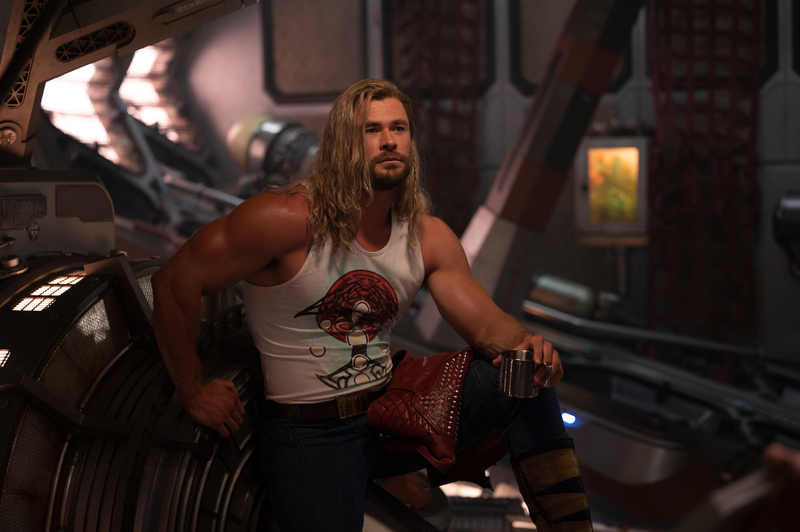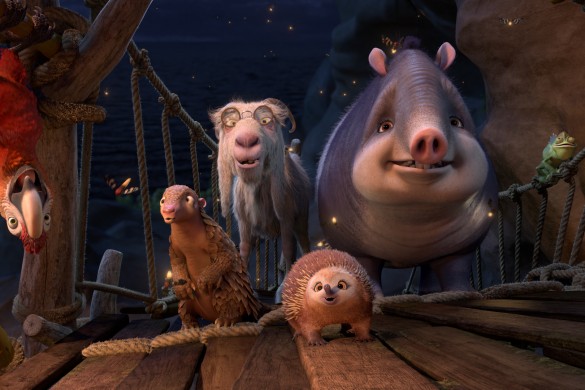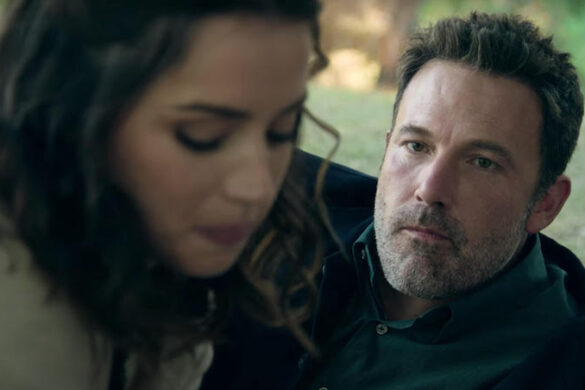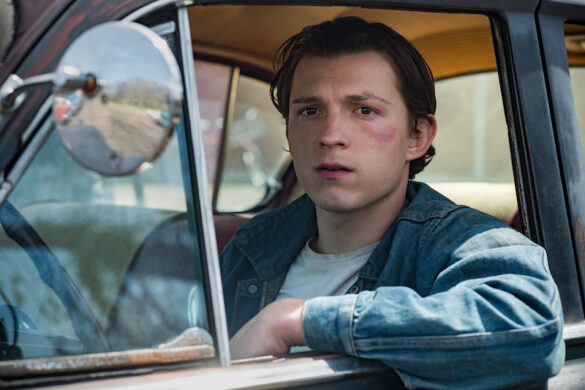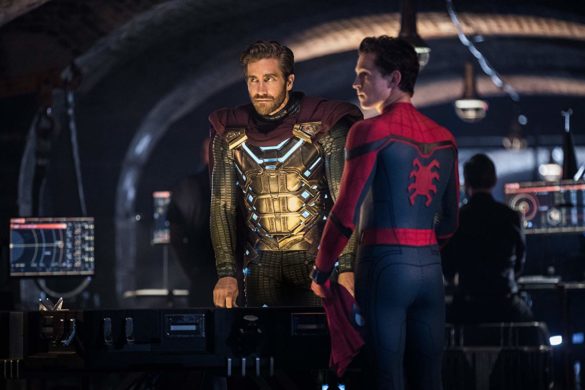The classic Thor adventure sees its titular Asgardian god of thunder protecting the Earth and the vast cosmos from an extraordinary threat while searching for an identity. It’s a recurring theme among the film franchise that often relied on the chemistry between Chris Hemsworth and Tom Hiddleston, and then was perfected by director Taika Waititi when he helmed “Thor: Ragnarok.” However, the character and franchise enter a new phase in “Thor: Love and Thunder.” It’s one where our title hero is trying to find his purpose beyond the battlefield while also teasing an intriguing existential journey.
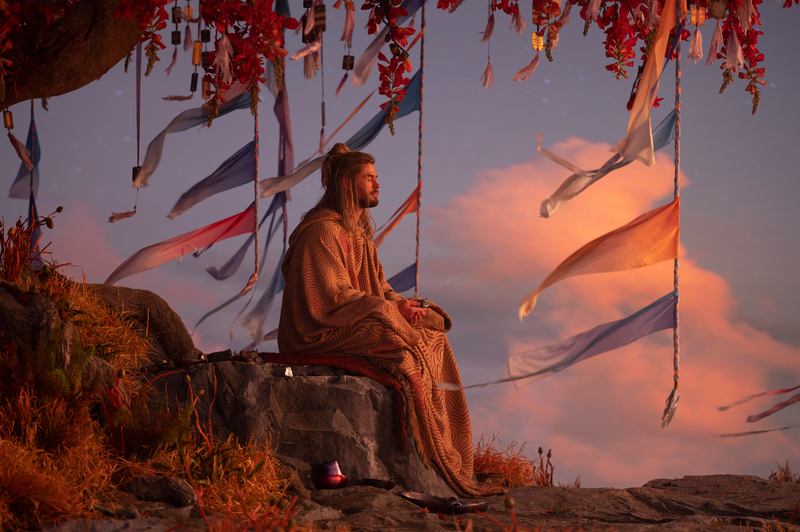
That constant search for meaning and place within the MCU has worked wonders for the Thor film franchise. The first Thor film explored what it truly meant to be king, while “Thor: The Dark World” focused on the brotherly dynamics between himself and Loki. But Marvel’s fantastical genre took a turn for the better when Waititi stepped in as director for “Thor: Ragnarok.” The third installment of the Thor film franchise embraced its colorful space Viking adventure energy but was a reset device as it gave the character a chance to look inward and discover who he truly is.
Of course, that all changed after the events of “Avengers: Endgame.” Now, the Asgardian god of thunder, who’s spent his whole life not only defending Earth, Asgard, and the universe from threats like Thanos, is trying to resolve his newfound midlife crisis by searching for inner peace. But his quest for self-discovery comes to an abrupt halt when a vengeful Gorr (Christian Bale) vows to kill all gods for deceiving their devout disciples.
Forced back to saving the day again, Thor realizes that he is no match for Gorr and his shadow-summoning monster blade, the Necrosword. As such, he enlists the help of King Valkyrie (Tessa Thompson), Korg (Taika Waititi), and cancer-stricken ex-girlfriend Jane Foster (Natalie Portman), who — to his surprise — inexplicably wields his magical hammer that allows her to become the Mighty Thor. Together, they embark on a cosmic adventure filled with action, comedy, drama, and romance.
Though “Thor: Love and Thunder” is Marvel Studios’ unprecedented fourth film for one hero, it also marks the return of Waititi as director of the titular film franchise. As such, he not only brings imagination to life but also finds the humanity in these fantastical characters. It also helps Jane Foster and Gorr have more incredible character arcs. Especially for the former, who was more so just the techy damsel and is now a hero eager to prove her worth despite her terminal illness.
But rather than double down on the same approach that rejuvenated the Thor film franchise, Waititi reshapes the character’s narrative by approaching the fourth chapter as a bedtime story that’s read against the sounds of a Guns and Roses album. His vision for Thor’s latest chapter turns out to be a wildly imaginative action-adventure that plays like a bedtime story.
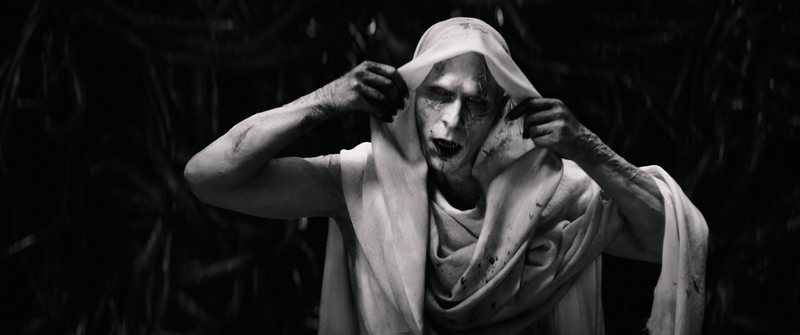
And just like any classic adventure, there are stakes and conflict. So it’s pretty straightforward in “Thor: Love and Thunder,” with Gorr serving as the primary antagonist who is dead set on taking out his vengeance on the gods who wronged him because of their vanity and ego. The only problem is that the film is weighed down by heavy exposition that cuts away from a lot of the action, character work, and humor.
And his sense of humor and comedic sensibilities helps push MCU’s fantastical whimsy world full of color and odd characters. The aesthetics and designs reflect the hair metal 80s rock energy and imagery you’d see on vinyl albums and the side of van panels. Even Korg’s narration of Thor’s adventures is acutely aware of the hair metal vibes and the character’s mid-life crisis. The Avenger can’t figure out who he is or where he fits in the grand cosmos. He takes on different personas, from a swashbuckling hero to a space Viking adventurer. And his antics and bad boy attitude are too much, even for the Guardians of the Galaxy.
But Thor isn’t the only one going through an identity crisis. King Valkyrie finds herself ill-prepared for the bureaucracy of running a kingdom. She’s more suited to fight battles than she is cutting ribbons and promoting New Asgard as the latest tourist destination. Luckily, Gorr’s vow and Thor’s arrival give her the chance to relive those glory days. And she finds a new sister in the terminally ill Jane Foster, who gains newfound strength every time she uses a reconstituted Mjolnir.
And Jane goes through her own crisis as her expected death makes her look back on her life and consider what she has accomplished. While being a published author and world-renowned astrophysicist is something to be celebrated, Jane feels she could have done more. This leads her to research the healing effects of Mjolnir. However, the power of the reconstituted hammer gives her a newfound sense of agency and purpose. She no longer has to be relegated to solving problems on the computer and can be an active member of Thor’s team. However, wielding Mjolnir does come at an adverse cost as it accelerates her cancer. So, of course, there will come a time when she has to decide if her life is worth stopping Gorr.
As for Bale, he’s played the hero long enough to see himself become the villain. Now that he hasn’t played an unlikeable character before. Gorr certainly has a creepiness that makes him feel like the typical scary villain from a bedtime story. But, of course, he is limited to what he can work with. But whenever Gorr appears on screen, Bale chews up the screen with a kind of performance that makes you want to hide under the blanket.
So it’s fun to see Waititi take such a fun and whimsy approach juxtaposed with the hair metal music to the storytelling. For one thing, it keeps things fresh. Also, because the Thor trilogy of the Infinity Saga is more like cinematic episodes of a larger story, it’s nice to see a character piece that can focus on Thor’s new journey of self-discovery.
And one can’t have that classic storybook adventure without a bit of romance. After sitting out “Thor: Ragnarok,” Portman returns to reprise her role as Jane Foster, aka Thor’s love interest. Using Korg as a narrative vessel, we see what went wrong between the two and why they split in a way that’s comedic but also tragic. Also, Jane’s return forces the Asgardian god of thunder to confront his past mistakes and maybe a few of his demons now that she has proven herself worthy to be the Mighty Thor.
Seeing a reconstituted Mjolnir brings a sense of relief to Thor, who’s had a previous intimate relationship with the hammer. But it also brings plenty of emotional pain to our hero, who has a history with the weapon. If anything, that history reveals a hilarious dynamic between Thor and Stormbreaker. Unlike Mjolnir, Stormbreaker has its own personality, one that is reminiscent of Doctor Strange’s Cloak of Levitation. A lot of Stormbreaker’s quirks are influenced by an adolescent Groot, who sacrificed his arm to build the handle that’s attached to the blade. You can sense the expressionless weapon’s jealousy through cold glares and its urge to rebel whenever Thor yearns to wield Mjolnir.
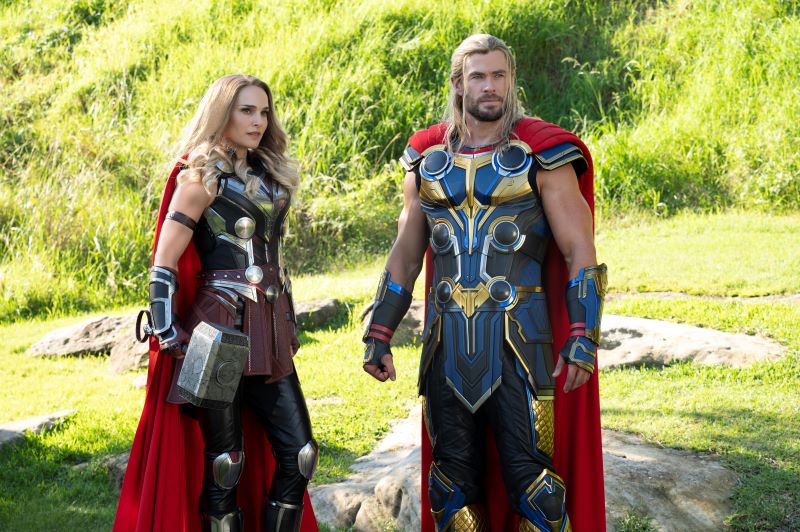
Though the Thor and Jane reunion lend itself to making “Thor: Love and Thunder” more of a cosmic romantic comedy, much of that is cut short because it has to deal with the Gorr drama or obtaining Zeus’s (Russell Crowe) lightning bolt from Omnipotence City. The film does explore the character choices that lead up to the split that is delivered in a comedic way that only Waititi could envision, and it reveals that the romance between the two never died and needed a rekindling from a villain bent on killing all gods. It’s certainly fun to watch Thor deny his feelings despite remembering how long it’s been since they last saw each other and his hilarious deflections whenever Valkryie brings up the subject. But there’s also a genuine concern when Thor learns about what Mjolnir is doing to a sick Jane.
“Thor: Love and Thunder” may have the same issues as any other Marvel Studios film that came before it, most notably tonal inconstances, filler arcs, and some pacing issues, but the Thor’s midlife crisis and search for a new identity is a refreshing change of pace for the character. Waititi imbues a ton of 80s hair metal aesthetics and imagery to create a visually striking film that’s full of vibrant colors and action set pieces that rock. And it’s even more fun to watch when those visuals and the use of Guns and Roses greatest hits are juxtaposed against the Waititi’s bedtime storytelling delivery. In the end, what we get is a totally rad and whimsy character piece that’s full of outstanding action and really awesome music.
8.5/10

